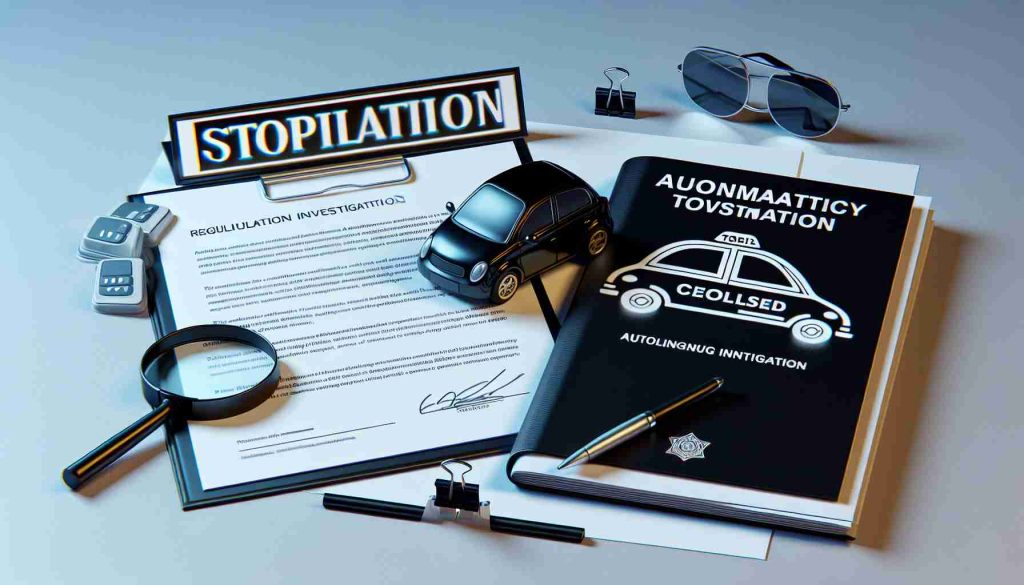NHTSA Closes Investigation into Cruise Robotaxis Amid Company Shutdown
6 min read
The National Highway Traffic Safety Administration (NHTSA) has concluded its investigation into Cruise robotaxis following the company’s decision to suspend its operations. This marks a significant development in the evolving landscape of autonomous vehicle regulation.
The investigation was initiated to assess safety concerns surrounding Cruise’s self-driving fleet, which had been operating in select urban areas. As the company halted its services, the NHTSA determined that the inquiry was no longer warranted.
In recent months, Cruise faced mounting challenges, including regulatory scrutiny and operational difficulties. These factors contributed to its decision to cease business, prompting the NHTSA to take action regarding the investigation.
The closure of the probe underscores the complexities faced by companies in the autonomous vehicle sector as they navigate safety regulations and public acceptance. As Cruise halts its operations, the future of robotaxis remains uncertain, casting a spotlight on the regulatory environment that shapes innovation in transportation.
As the NHTSA shifts its focus, the agency continues to evaluate broader safety measures applicable to emerging technologies in the automotive industry. This transition may pave the way for revised guidelines that could impact other companies pursuing similar autonomous ventures.
Implications of Cruise’s Robotaxi Operations and Autonomous Vehicle Regulation
The cessation of Cruise’s robotaxi services is emblematic of the broader challenges that autonomous vehicle companies face in today’s regulatory climate. The implications of this setback extend beyond a single corporation; they resonate deeply within societal structures, cultural considerations, and the global economy.
At the societal level, the failure—or, at least, significant pause—in the operations of Cruise’s robotaxis raises questions about public trust in autonomous technology. As cities and communities grapple with the integration of self-driving cars, residents may become increasingly skeptical of their safety and efficacy. Successful integration of these innovations requires not only technological advancements but also an effective communication strategy that addresses public fears and misconceptions. This skepticism could slow adoption rates and limit investments in autonomous vehicle infrastructure, ultimately stymieing progress in this transformative sector.
Culturally, the perception of robotaxis is intertwined with broader attitudes towards technology and urban living. In metropolitan areas where congestion and pollution are pressing concerns, the promise of autonomous vehicles as solutions for alleviating traffic and reducing emissions could be transformative. However, setbacks like those faced by Cruise can trigger a cultural backlash, with communities pushing back against the rapid implementation of technologies they perceive as untested. Such dynamics complicate efforts to embrace smarter city planning that incorporates automation and sustainability.
The global economy also stands to be influenced heavily by the outcomes of these regulatory inquiries. The autonomous vehicle market holds the potential for significant economic growth, job creation in tech and manufacturing, and even shifts in the global supply chain if companies can successfully navigate regulatory landscapes. Cruise’s operational suspension may signal investors to tread cautiously, potentially stalling investment flows into autonomous technologies. Over time, this could impact innovation cycles, delaying advancements that may have broader economic benefits.
From an environmental standpoint, the implications are equally critical. The sustainability of autonomous vehicles hinges on not just their technology but also the policies governing their deployment. If Cruise’s operational pause leads to stricter safety and environmental regulations, it may accelerate the development of safer and greener technologies, catalyzing a more robust commitment to sustainability in the automotive sector. Conversely, prolonged uncertainty could hinder the industry’s ability to deliver on environmental promises, exacerbating current challenges in urban pollution and climate mitigation.
Looking ahead, the trajectory of autonomous vehicles will likely reflect a dynamic interplay between regulatory frameworks and technological capabilities. As the NHTSA refines its focus, future revisions to guidelines could either promote innovation or impose constraints that slow advancements. Companies like Cruise will need to adapt to an evolving legal landscape while simultaneously addressing public concerns and embracing their role as stewards of technological progress.
In conclusion, the closure of NHTSA’s investigation into Cruise highlights the multifaceted implications of autonomous vehicle operations. It serves as a reminder that the path to widespread acceptance of robotaxis involves navigating societal expectations, cultural contexts, and economic realities—all while striving for sustainable outcomes. The future of autonomous transportation remains a pivotal topic, interwoven with the broader narrative of innovation, regulation, and societal evolution.
Assessing the Future of Autonomous Vehicles: Insights from the Cruise Robotaxi Investigation
The recent conclusion of the National Highway Traffic Safety Administration (NHTSA) investigation into Cruise’s operations marks a pivotal moment in the autonomous vehicle (AV) discourse. With the suspension of Cruise’s robotaxi services, the implications for the future of AV technology are becoming clearer. Below, we delve into various aspects surrounding this significant development, focusing on potential regulatory impacts, consumer perceptions, and the ongoing challenges of autonomous driving technologies.
FAQs about the Cruise Investigation
What were the main safety concerns raised during the NHTSA investigation?
The NHTSA’s inquiry revolved around reports of safety incidents involving Cruise’s robotaxi fleet, including erratic driving behavior that could potentially endanger passengers and pedestrians.
Why did Cruise suspend its operations?
Cruise suspended its operations primarily due to increasing regulatory scrutiny and the need to reassess safety protocols, as highlighted by the investigation’s findings.
What does the conclusion of the investigation mean for other autonomous vehicle companies?
The conclusion indicates that while safety investigations are crucial, they do not necessarily signal an end to operations for all AV companies. However, it reinforces the necessity for comprehensive safety measures and regulatory compliance.
How-tos for Navigating the Autonomous Vehicle Landscape
For Consumers: What to Consider When Using Autonomous Taxis
1. Safety Track Record: Always research the safety record of the autonomous vehicle service in your area.
2. User Reviews: Check customer feedback and recent news updates to gauge public sentiment about the vehicle’s reliability.
3. Understand the Technology: Familiarize yourself with how autonomous technology works and the level of automation provided by the service.
For Startups: Key Steps to Prepare for Regulatory Compliance
1. Engage with Regulators Early: Establish communication lines with safety regulators to understand their requirements and expectations.
2. Conduct Rigorous Testing: Ensure your technology undergoes extensive real-world testing to validate safety claims.
3. Transparent Reporting: Be prepared for regular reporting on safety incidents and operational challenges to maintain public trust and comply with regulations.
Pros and Cons of Autonomous Vehicle Technologies
Pros:
– Increased Safety Potential: AVs have the potential to reduce human error, which accounts for approximately 94% of traffic accidents.
– Enhanced Mobility: They offer significant benefits for mobility-challenged individuals, providing new transportation options.
– Reduction in Traffic Congestion: The promise of smarter traffic management and routing could alleviate congestion in urban areas.
Cons:
– Regulatory Hurdles: Ongoing regulatory scrutiny can delay innovation and market entry for companies.
– Public Trust Issues: Safety incidents, like those that prompted the NHTSA’s investigation, can impact consumer confidence in AV technologies.
– Job Displacement Concerns: The rise of autonomous driving poses significant implications for employment in driving-related sectors.
Predictions and Emerging Trends
The future landscape for autonomous vehicles is likely to be shaped by evolving regulatory frameworks and technological advancements. As the NHTSA reassesses its guidelines, companies may need to adapt to stricter requirements that ensure both safety and public trust. Additionally, as public skepticism persists, transparency and consumer engagement will be crucial for AV companies seeking to regain consumer confidence.
Moreover, the suspension of Cruise’s operations may lead to a trend of increased collaboration between AV companies and regulatory bodies. This partnering could foster shared safety data and best practices that benefit not just individual firms but the entire industry.
In conclusion, the ongoing developments in the autonomous vehicle sector, highlighted by the Cruise investigation, suggest a complex path ahead. Stakeholders must navigate the intricate balance between innovation, safety, and public acceptance to foster a new era of transportation. For more detailed information on safety regulations and emerging technologies, consider exploring helpful resources like the NHTSA.



